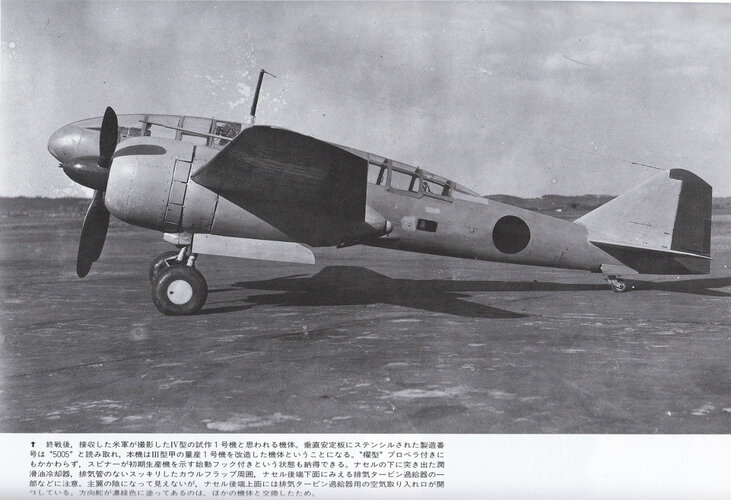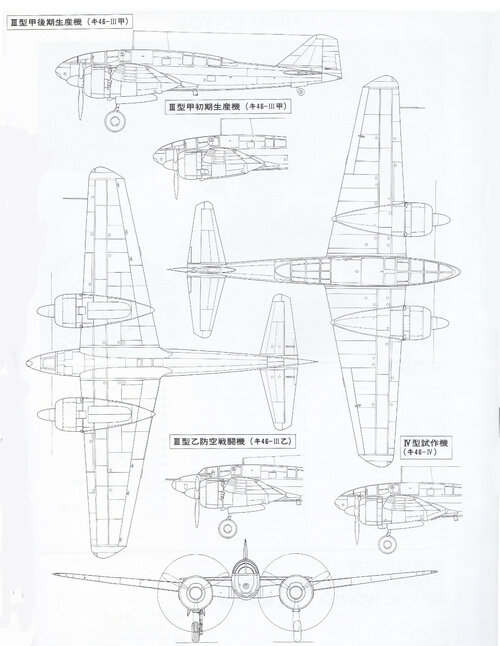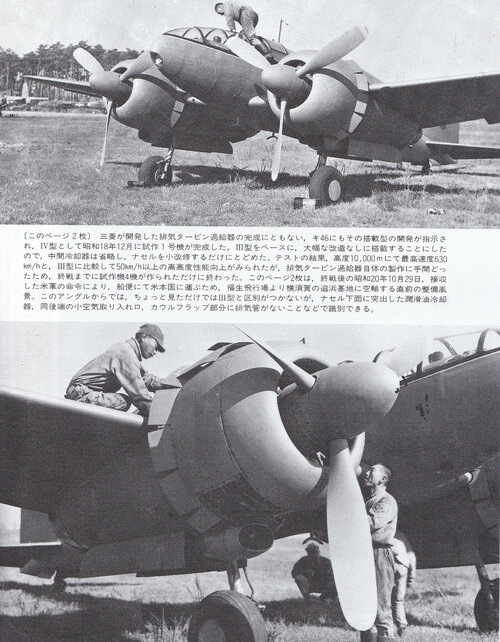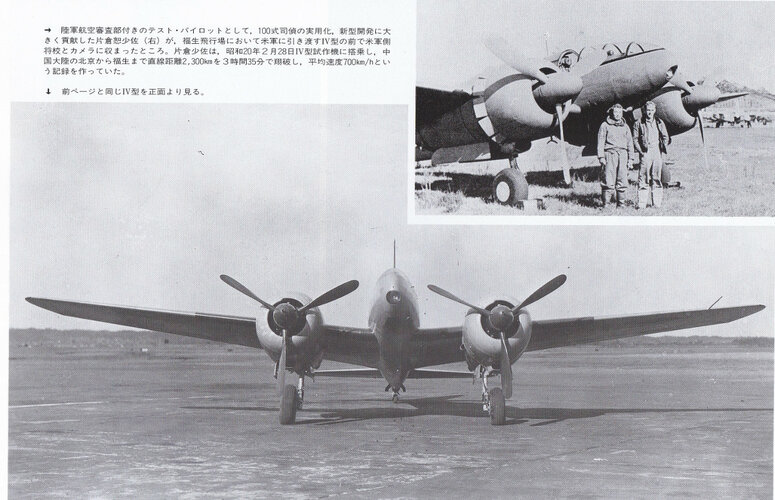Deltafan
ACCESS: Top Secret
- Joined
- 8 May 2006
- Messages
- 1,697
- Reaction score
- 2,317
Hi,Hi windswords-san! Good question.
In 1943, the Ha 112-II Le single-stage two-speed super charged engine with a turbocharger developed by Mitsubishi was decided to be installed on the Type 100 reconnaissance aircraft, and the Army developed it as the Ki-46-IV. In December of the same year, the first prototype of the Ki-46-IV was completed. Developed on the basis of the Type 3 (Ki 46-III) without major remodeling, it succeeded in its first flight on January 12, 1944 at the Kakamigahara Army Airfield. As a result, a maximum speed of 630km / h / 10,000m was recorded, and the high altitude performance was improved by 50km / h or more compared to the Type 3 (Ki46-III).
After refurbishment and examination, it was planned to be put into practical use in February 1945 (Showa 20), but the war ended before mass production.
At 10:00 am on February 27, 1945, two Type 4 (Ki 46-IV) equipped with turbochargers took off from Nanyuan Airfield in Beijing and flew to Fussa's Tama Army Airfield. It took 3 hours and 35 minutes for the No. 1 aircraft and 3 hours and 15 minutes for the No. 2 aircraft from the takeoff in Beijing to the stop in front of the Fussa hangar. The actual flight distance was 2,250 km, with an average speed of over 700 km / h. The jet stream in the winter helped them to gain an advantage, but there was a problem during takeoff (the second aircraft took off again in Beijing. The first aircraft that took off waited for the second aircraft and turned over Beijing. Repeatedly lost time) and bad weather (Beijing weather on that day was powder snow and visibility was only about 2 km, it was a complete cloudy to the Korean Peninsula).When they landed at Tama Airfield, there was enough fuel in the tanks located front of the fuselage.
is there a known photo or drawing of the Ki-46-IV ?




